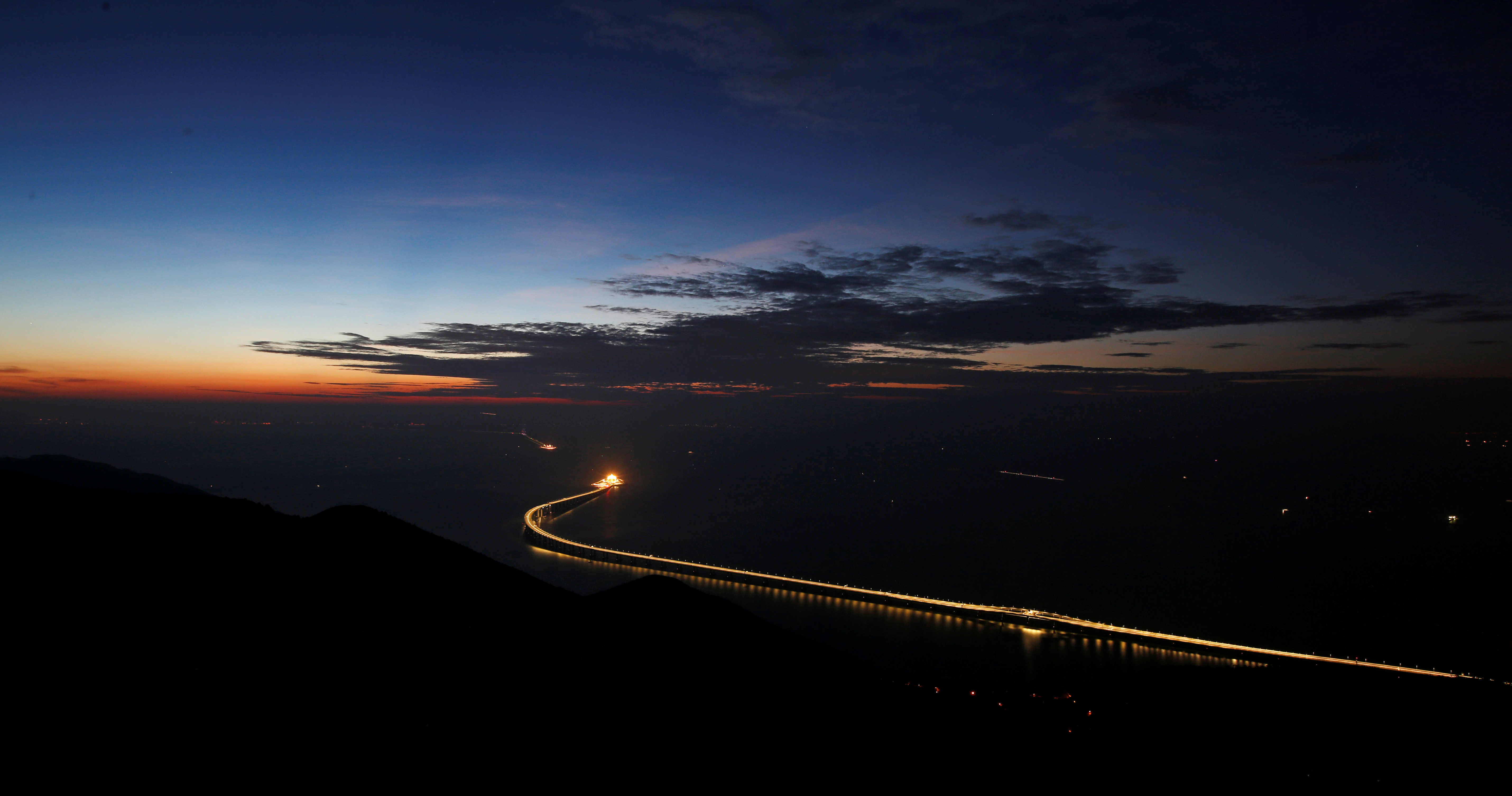After nine years of construction and controversy, China officially unveiled the world’s longest sea bridge at an October ceremony in Hong Kong.
At more than 34 miles long, the Hong Kong-Zhuhai-Macau Bridge is part of a master plan to create a global science and technology hub by connecting two Chinese territories, Hong Kong and Macau (the world’s largest gambling center), to nine nearby cities.
With an economic output of $1.5 trillion, the new mega-region – known as the Greater Bay Area – is positioned to rival Silicon Valley. The plan also includes the construction of an $11 billion bullet train, which opened in September.
The bridge is not open to public transit, so only certain vehicles – shuttles, freight cars, and private cars with permits – are allowed to cross. Pedestrians and bicyclists are prohibited.
While some have criticized the structure as a waste of taxpayer dollars, others tout its ability to connect up to 70 million people in the region.
Take a look at its remarkable design below.
The $20 billion structure is 20 times as long as the Golden Gate Bridge.

The title of world's largest sea bridge previously belonged to the Jiaozhou Bay Bridge, which stretches 26.3 miles.

Source: BBC
The Hong Kong-Zhuhai-Macau Bridge is designed to last for more than a century, with the capacity to withstand major storms and earthquakes.

The structure should hold up in the face of 211 mph winds. That claim was put to the test in September, when Typhoon Mangkhut swept through Hong Kong, destroying roofs, shattering windows, and toppling trees.
The bridge is made of 420,000 tons of steel — enough to build 60 Eiffel Towers.

Source: Business Insider
The bridge's towers were inspired by three elements: Chinese knots, the Chinese white dolphin, and the mast of a boat.

Source: The Guardian
The bridge's curves are designed to resemble a snake.

Source: The Guardian
A 4-mile underwater tunnel connects two artificial islands, which help support the structure.

The tunnel was built below the water to prevent the disruption of shipping lanes. The Greater Bay Area is one of the busiest shipping areas in the world, with about 4,000 vessels passing through each day.
Construction kicked off in 2009 and was set to finish in 2016 but was delayed because of budget and safety concerns.

Source: The Guardian
Nine workers have died and more than 200 have been injured over the course of construction.

Nineteen workers have also been charged with faking concrete-test reports.
Some have questioned the bridge's stability after photos appeared to show its wave-absorbing concrete blocks drifting off into the water.

Authorities said the structure was intended to be partially submerged, though renderings tell a different story.
Environmentalists fear that construction has threatened the livelihood of the Chinese white dolphin.

The area where the Pearl River meets the South China Sea was once a sanctuary for the species, whose population has declined since construction began.
Officials expect the bridge to cut commute times in half.

About 40,000 vehicles are expected to use the bridge on any given day, with shuttle buses running every 10 minutes.
The bridge includes a designated merge point, where cars can switch to the appropriate side of the road.

People in Hong Kong and Macau drive on the left side of the road, while those in mainland China drive on the right.
Chinese President Xi Jinping is expected to attend the bridge's official unveiling on Tuesday.

Source: Wall Street Journal
To cross the bridge, pedestrians and drivers without a permit will have to purchase a shuttle ticket, costing $8 to $10.

Source: CNN
Experts say Hong Kong should expect an influx of tourists from mainland China.

Source: CNN

